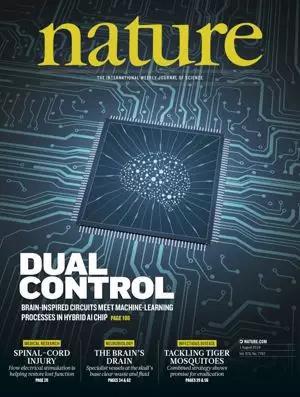
Huawei’s AI dog


China’s largest oceanographic research vessel dubbed the “Sun Yat-sen University,” was launched at Jiangnan Shipyard in Shanghai on Friday, about 92 years after China’s first scientific expedition to the Xisha Islands in the South China Sea.
Construction of the research vessel began on October 28, 2019. With a length of 114.3 meters, a width of 19.4 meters, and a draft of 9.3 meters, the ship has a range of 15,000 nautical miles.
The research vessel with a displacement of 6,900 tons is capable of global navigation in unlimited navigation areas and can carry more than a dozen mobile container laboratories. It is capable of completing various kinds of scientific research from the seabed to the sky of 10,000 meters, including ocean, atmosphere, geophysics and the ecological environment.
The ship also has a helicopter landing platform, which is convenient for scientific researchers and materials transport, and it can also be used as a drone landing platform, which could expand the scope of scientific research observation. In the future, a 760-square-meter stationary laboratory will be built on the ship.

There are two main approaches to developing artificial general intelligence. One is rooted in neuroscience, and attempts to construct circuits that closely mimic the brain. The other is grounded in computer science, and uses computers to execute machine-learning algorithms. In this week’s issue, Luping Shi and his colleagues reveal the Tianjic chip 天机芯 — an electronic chip that integrates the two approaches into one hybrid platform. The Tianjic chip has multiple functional cores that are readily reconfigurable, enabling it to accommodate both machine-learning algorithms and brain-inspired circuits. The researchers demonstrate the potential of this approach by incorporating one of their chips into a riderless autonomous bicycle, which can self-balance, is voice controllable and can detect and avoid obstacles, all as a result of the Tianjic chip’s simultaneous processing of versatile algorithms and models.


According to Nie Wenbin, manager of 中车株洲电力机车有限公司 urban rail system research and development department of CNR Zhuzhou, this high-energy super-capacitor tram will be used in the rapid transit system of Kunming Changshui International Airport, using three groups of 60,000 fara high-energy supercapacitor power supply. 7 modules (i.e. 7 cars) with a maximum capacity of 500 passengers, can be recharged within 30 seconds of passengers loading and unloading, and run 5 km at a maximum speed of 70 km per hour.


China successfully sent the Gaofen-9 05 高分九号05 – a high resolution Earth observation satellite – into planned orbit via a Long March-2D carrier rocket from the Jiuquan Satellite Launch Center in Northwest China’s Gansu Province on Sunday morning at around 10:30 am.
The Gaofen-9 05 is an optical remote-sensing satellite that is capable of providing photographs with a resolution of less than a meter.
It will be used for land surveys, urban planning, road network design, agriculture and disaster relief, and support the construction of the China-proposed Belt and Road Initiative, the Global Times learned from China’s space authorities.
A multi-functional experiment satellite that was developed by China’s People’s Liberation Army (PLA) Academy of Military Sciences, and Tiantuo-5, a spacecraft developed by the National University of Defense Technology, were also launched during the mission.
The multi-functional experiment satellite will carry out work in a series of new fields in orbit ranging from communication to navigation. Tiantuo-5 will be used to verify in-orbit information collection capabilities from ships, spacecraft and Internet of Things.

China National Nuclear Power will cancel a nuclear energy technology development subsidiary scheduled to cooperate with Bill Gates’ Terra Power to develop fourth-generation nuclear energy technology because the US government is standing in the way of the partnership, CNNP announced yesterday.
Terra Power unilaterally terminated the cooperation in the fourth-generation nuclear energy technology traveling-wave reactor with the technology transfer limitations placed by the Trump administration, resulting in the loss of the foundation for the cooperation, the major Chinese energy developer said in its announcement.
CNNP decided to dissolve and cancel CNNP TWR Technology Investment Tianjin overseeing the project funding and CNPC Hebei Nuclear Power in charge of implementing the project, per the announcement.
CNNP’s wholly-owned CNNP Technology Investment unit holds a 50 percent stake in each of the two project companies.
CNNP TWR and Terra Power’s wholly-owned subsidiary set up a joint venture Global Innovation Nuclear Energy Technology with a 50:50 split in November 2017 to jointly develop traveling-wave reactor technology and advance the TWR project, per the announcement.
TWR is fourth-generation nuclear power technology, which uses a nuclear fission reactor to convert material into usable fuel via nuclear transmutation, in conjunction with the burnup of fissile material. Existing unclear power can directly use only about 0.7 percent of the isotopes in natural uranium, but the TWR technology can use 30 percent to 40 percent, and even 60 percent to 70 percent in some cases.
Theoretically the TWR technology can sustain operations for decades on one charge of fuel without replenishment or removal of spent fuel, which reduces the cost and environmental risks of nuclear energy as well as the risk of nuclear proliferation.


中医问闻望切四诊仪 主要组成及功能编辑
由舌面模块、脉象模块、问诊(体质辨识)模块、数据管理模块、传感器、内置数据处理工作站等组成。
适用范围:供医疗机构进行舌象、脉象、面色诊测信息采集及辅助体质辨识;供中医辨证参考用。

舌面模块
[工作原理 ]
在特定的光源环境下,采用照相机获得患者舌、面部位的图像信息,运用国际照明委员会(CIE)色差公式和支持向量机(SVM)、动态形状模型(ASM)等多项成熟先进技术,对舌体及面部图像的颜色、纹理、轮廓进行特征提取,将这些特征值与特征数据库中的阈值进行比对,给出舌象、面色分析结果。
[输出结果]
脉象模块
[工作原理 ]
采用特定触力面的压力传感器,对受试者脉搏压力信号进行采集,通过传感器将其转换为压力波的电信号,然后提取电信号中具有代表性的幅度值与时间值,与特征数据库中的阈值进行比对,给出脉象分析结果。
[输出结果]

脉象名称:浮 、沉 、迟 、数 、缓 、疾 、结 、代、促、虚、实、弦、紧、滑 、涩 、平等。
问诊(体质辨识)模块
[工作原理]
采用中华中医药学会ZYYXH/T157-2009《中医体质分类与判定》标准,通过问诊模块的人机交互,系统自动分析给出体质辨识结果。
[输出结果]

体质类型:平和质、气虚质、阳虚质、阴虚质、痰湿质、湿热质、血瘀质、气郁质、特禀质。
数据管理模块
舌面象模块
拍摄环境稳定,分析准确性高
采集装置有效像素1500万以上,分辨率与色彩还原性符合中医体质辨识临床应用的要求;
采集环境采用了具有自主知识产权的结构设计,能够模拟自然光照环境,均匀稳定、无反光、无阴影;
可根据不同的拍摄部位自动调整位置和角度,满足在同一光照环境中先后拍摄舌面图像的要求。
脉象模块
客观化信息采集,定量化脉图分析
脉搏采集部件符合人体工程学设计要求,能进行准确的取脉定位,并能模拟中医举、按、寻的诊脉过程,浮、中、沉三部全自动加压取脉,减少人为因素的干扰;
智能化软件分析,能自动进行特征提取、自动识别与滤除各种伪差,DS01-A型中医体质辨识系统可提供脉象分析结果。
问诊(体质辨识)模块
采用中华中医药学会ZYYXH/T157-2009《中医体质分类与判定》标准,通过问诊模块的人机交互,DS01-A型中医体质辨识系统自动分析给出体质辨识结果。
数据管理模块
信息输出丰富,查询统计快捷
可输出图示化、定量化的中医四诊信息,为中医临床疗效评估与科研提供参考依据;
可将中医四诊信息接入医院信息系统,支持中医电子病历建设;
可提供高级查找、信息回放、历次数据对比等功能,最大程度满足医生的应用需求

Lenovo recently announced it will release the world’s first “foldable-screen” PC, the Think Pad X1 Fold, in the Chinese market. The PC, weighing only 999 grams, is expected to be launched in Sep or Oct.


